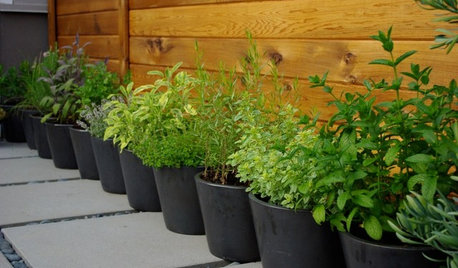My Small Orchard Troubles...
blackrag
14 years ago
Related Stories

GARDENING AND LANDSCAPINGCitrus 101: Start Your Own Backyard Orchard
This Earth Day Weekend, Add Some Green, Style and Deliciousness to Your Landscape
Full Story
KITCHEN DESIGNKitchen of the Week: Double Trouble and a Happy Ending
Burst pipes result in back-to-back kitchen renovations. The second time around, this interior designer gets her kitchen just right
Full Story
EDIBLE GARDENSHow to Grow 10 Favorite Fruit Trees at Home
Plant a mini orchard in fall, winter or early spring to enjoy fresh-off-the-tree fruit the following year
Full Story
THE HARDWORKING HOME12 Smart Designs for Small-Space Living
The Hardworking Home: Furnish your compact rooms more efficiently with these creative built-ins and adjustable pieces
Full Story
DECLUTTERINGSmall Steps for Keeping Your Housekeeping Resolutions
Take a different approach this year, making simple, positive changes that add up before you know it
Full Story
SMALL SPACESHow to Make Any Small Room Seem Bigger
Get more from a small space by fooling the eye, maximizing its use and taking advantage of space-saving furniture
Full Story
GARDENING GUIDESLush, Foodie Abundance in a Small Urban Garden
This modest backyard garden provides its owner with fruit and vegetables all year round, thanks to an innovative low-maintenance approach
Full Story
GARDENING GUIDES6 Ways to Grow Edibles in Small Places
No big backyard? Join in the grow-your-own fun with these small-space ideas for planting vegetables, fruits and herbs
Full Story
KIDS’ SPACES15 Tips for Small-Space Living With Baby
Keep your wee one's stuff under control and your nerves unfrazzled with these space-saving storage and baby-gear ideas
Full Story
SMALL SPACES11 Design Ideas for Splendid Small Living Rooms
Boost a tiny living room's social skills with an appropriate furniture layout — and the right mind-set
Full StoryMore Discussions







northwoodswis
jellyman
Related Professionals
Ballenger Creek Landscape Architects & Landscape Designers · Otsego Landscape Architects & Landscape Designers · Salisbury Landscape Architects & Landscape Designers · Taylorsville Landscape Architects & Landscape Designers · Burlington Landscape Contractors · Fairview Landscape Contractors · Fruit Heights Landscape Contractors · Kailua Landscape Contractors · Lemay Landscape Contractors · Longview Landscape Contractors · National City Landscape Contractors · North Potomac Landscape Contractors · Wareham Landscape Contractors · Palos Hills Landscape Contractors · Crowley Landscape ContractorsblackragOriginal Author
fruitnut Z7 4500ft SW TX
thisisme
blackragOriginal Author
olpea
alan haigh
john_in_sc
Axel
Michael
blackragOriginal Author
john_in_sc
olpea
marknmt
chills71
ashleysf
Konrad___far_north
rdak
Beeone
alan haigh
Scott F Smith
glenn_russell
alan haigh
eskota
eskota
alan haigh
john_in_sc
MrClint
alan haigh
MrClint
alan haigh
Scott F Smith
olpea
alan haigh
bruce2288
MrClint
john_in_sc
Michael
alan haigh
keepitlow
john_in_sc
alan haigh
destin_gardener